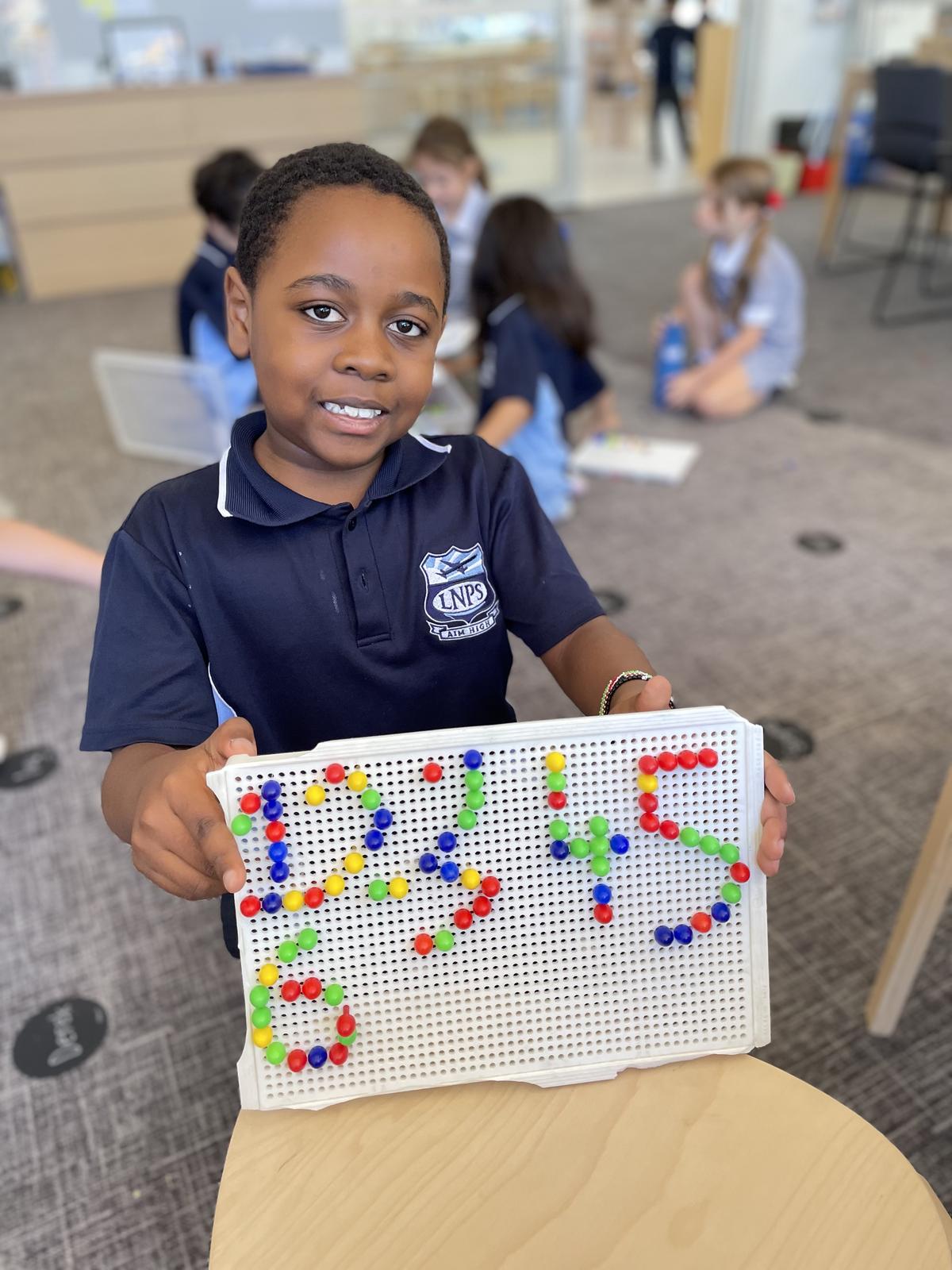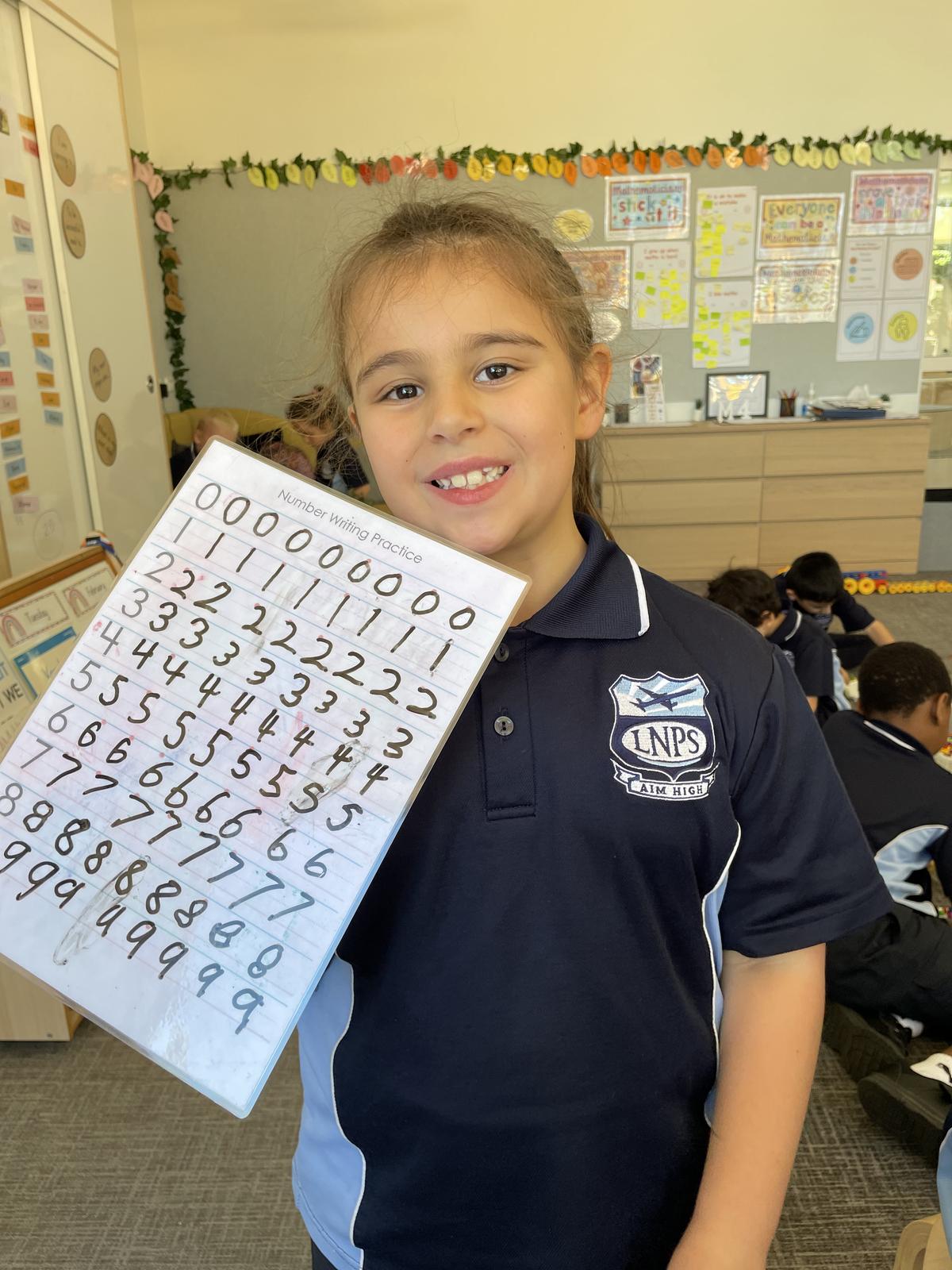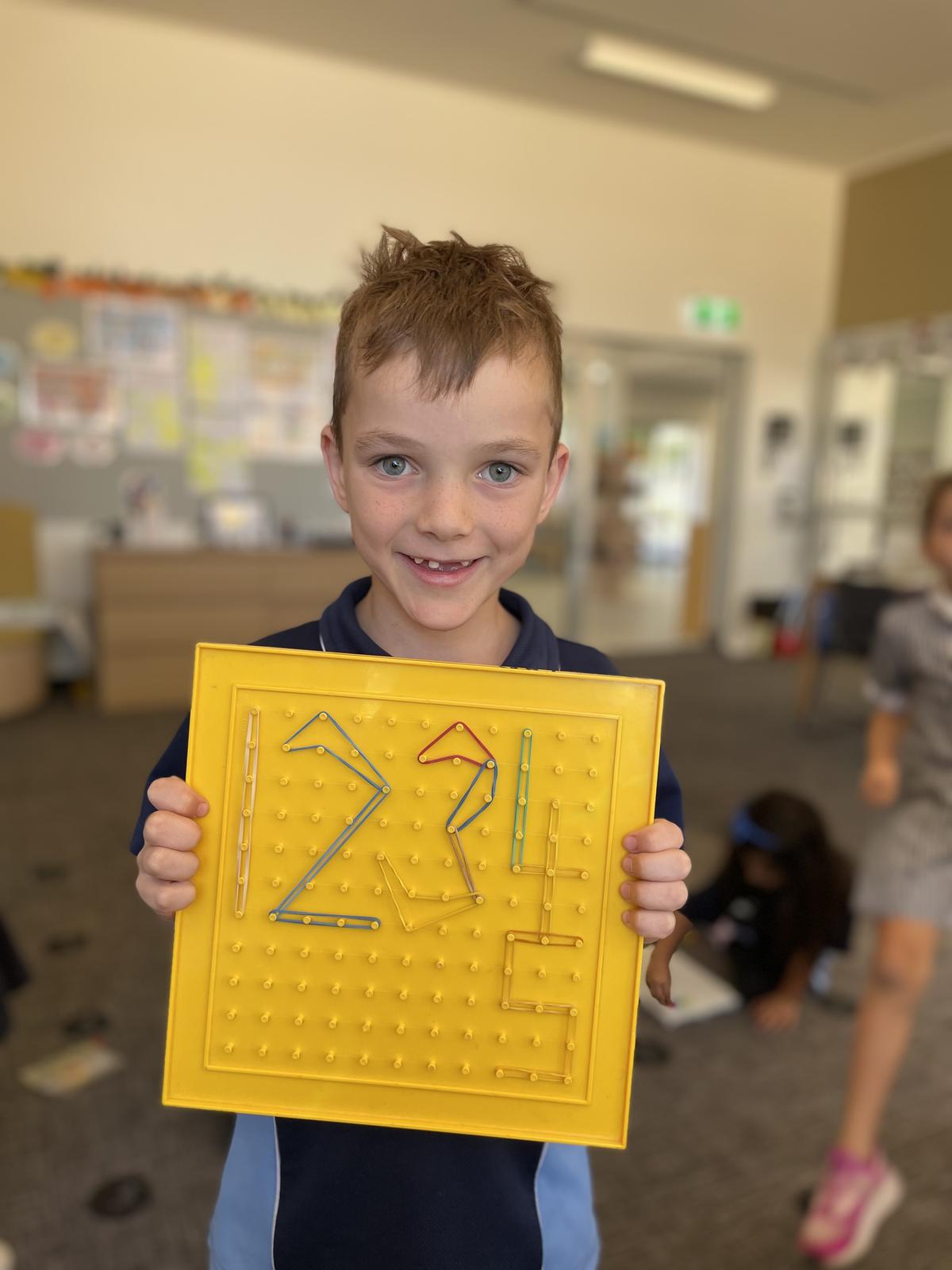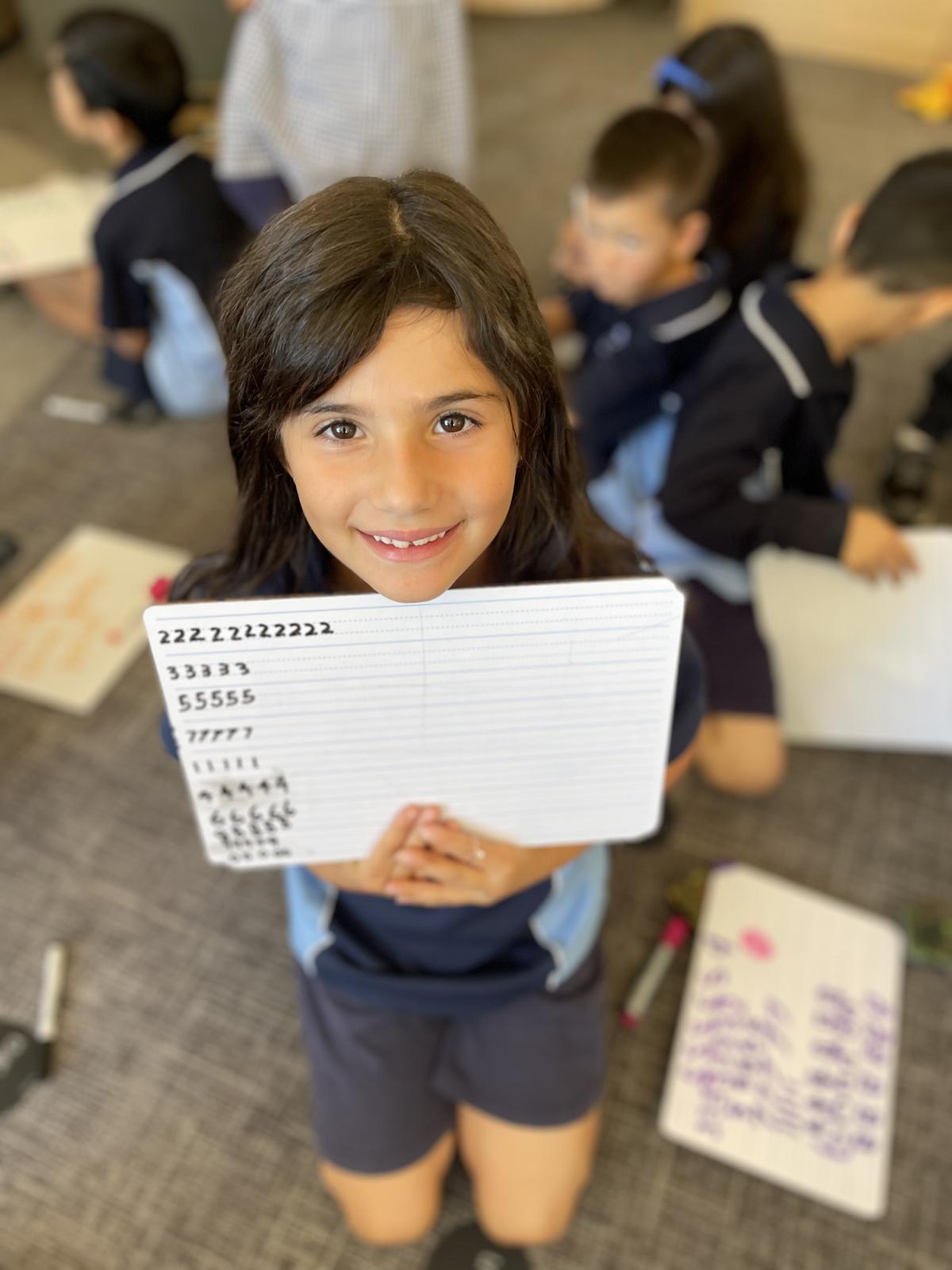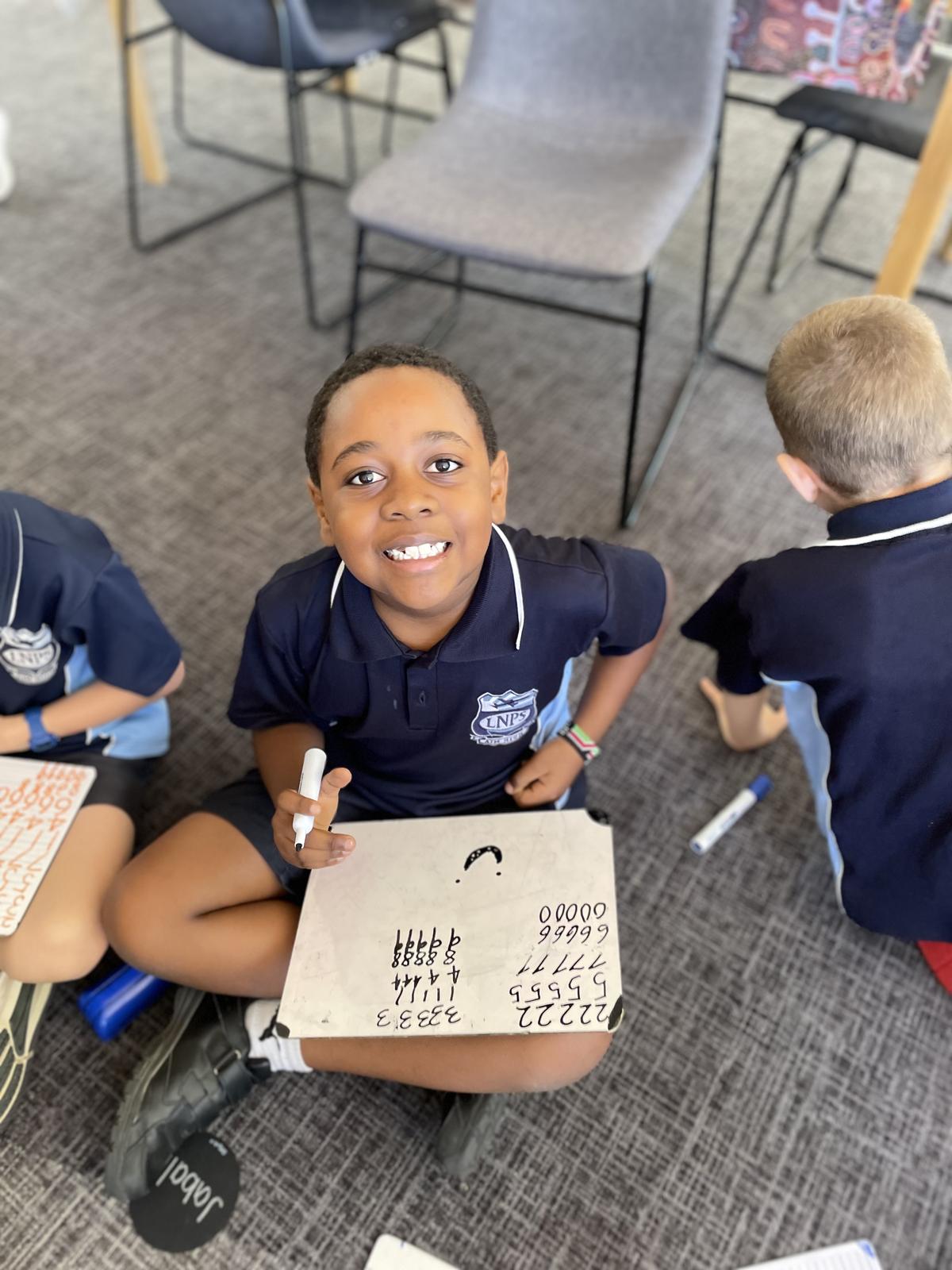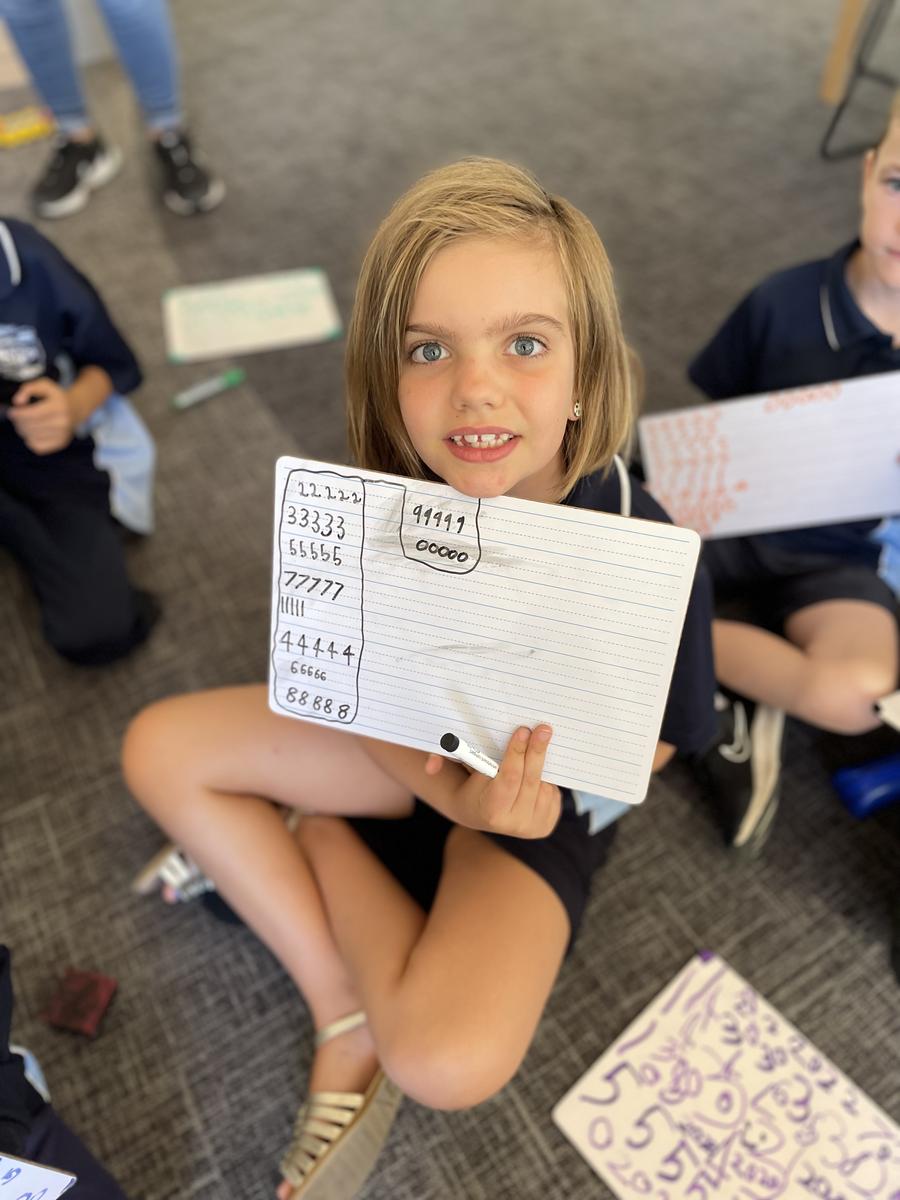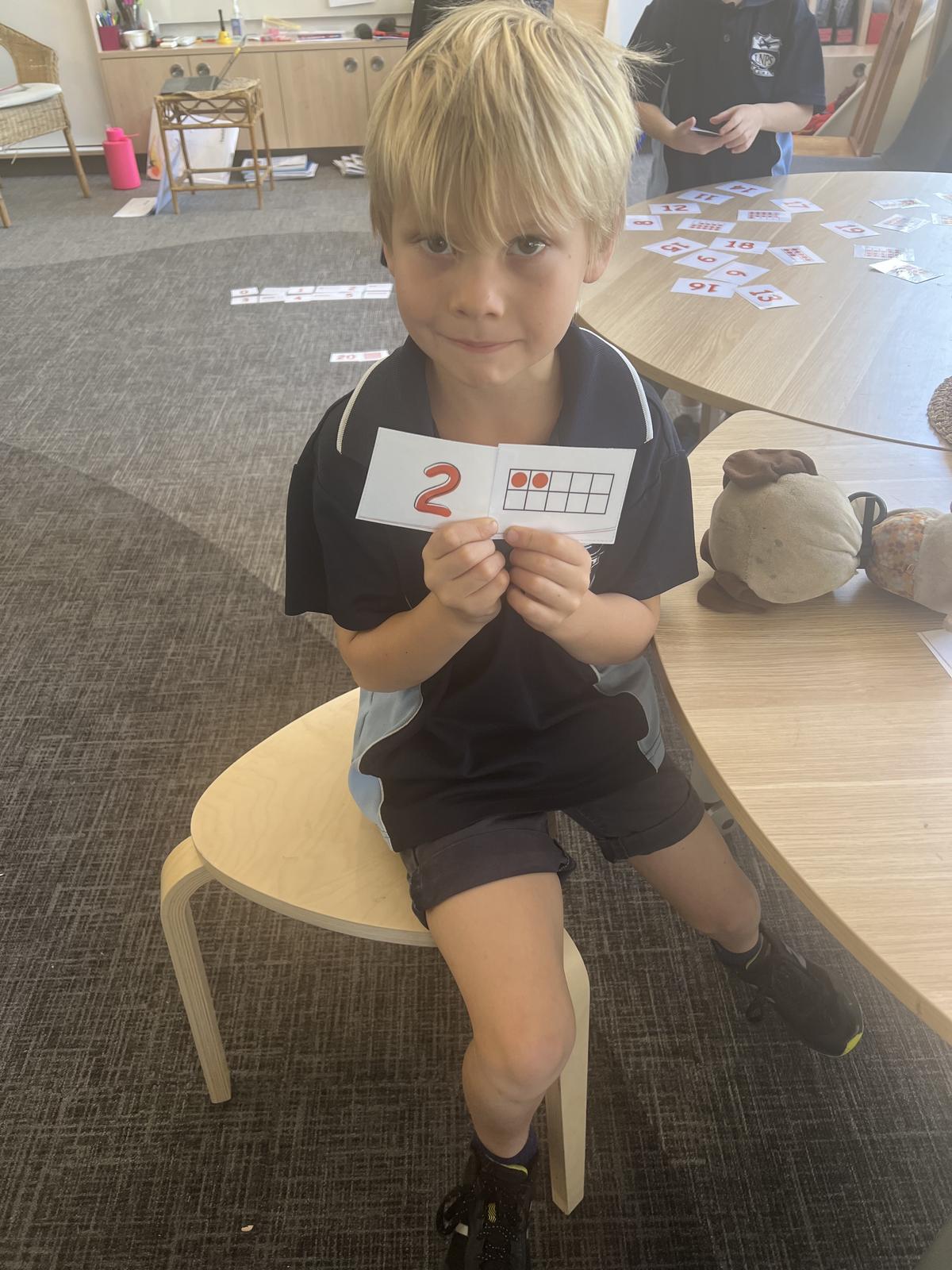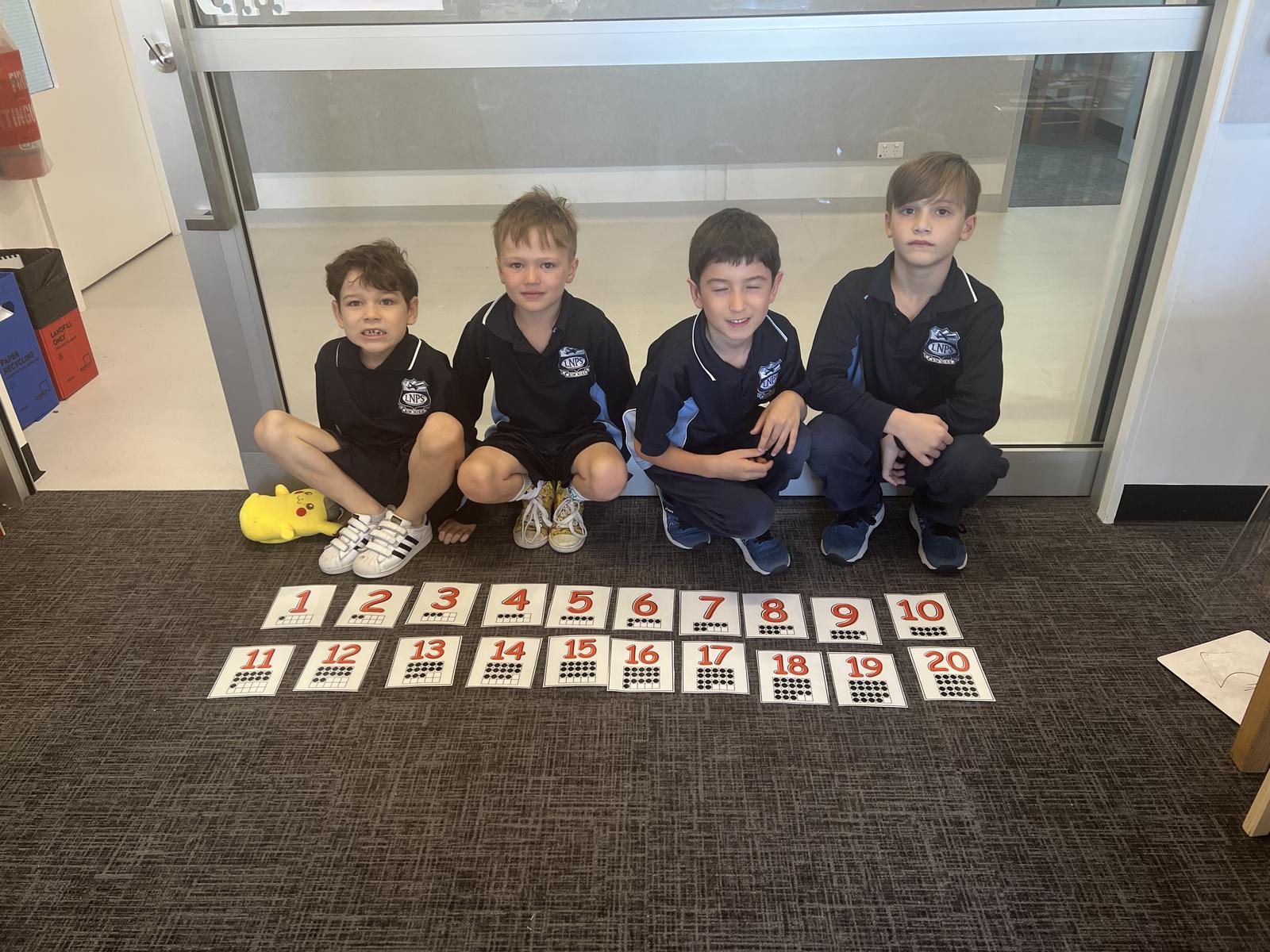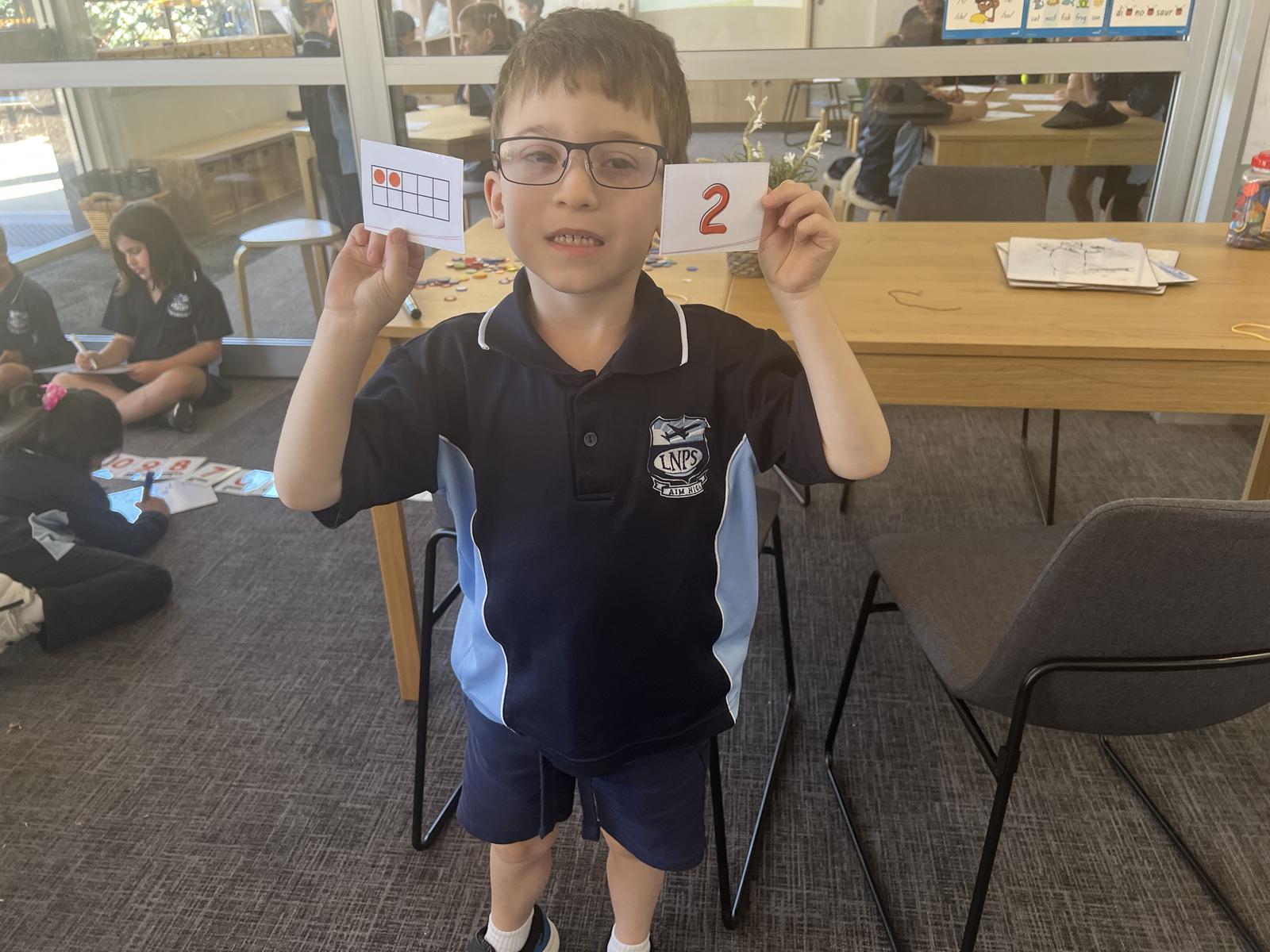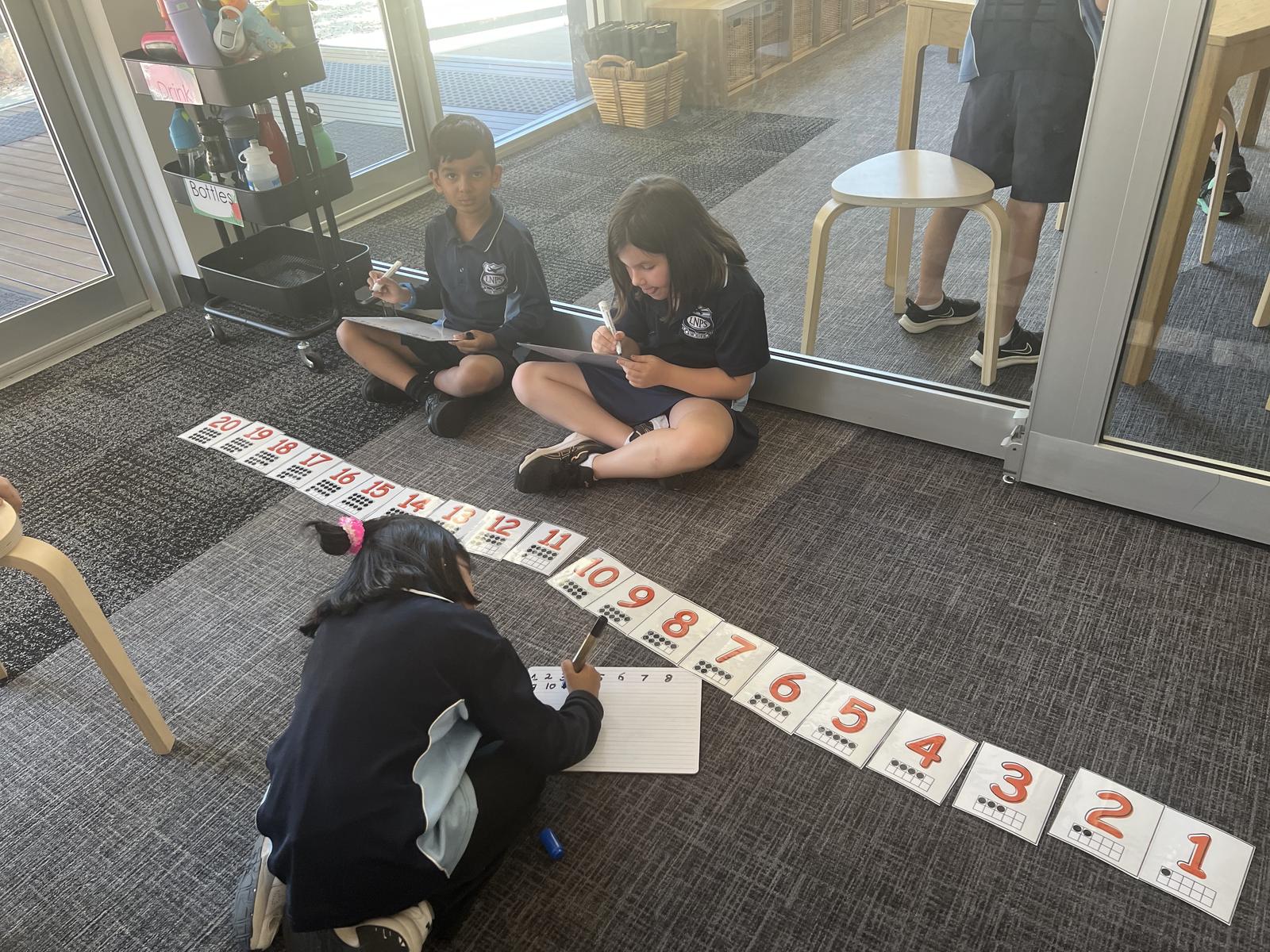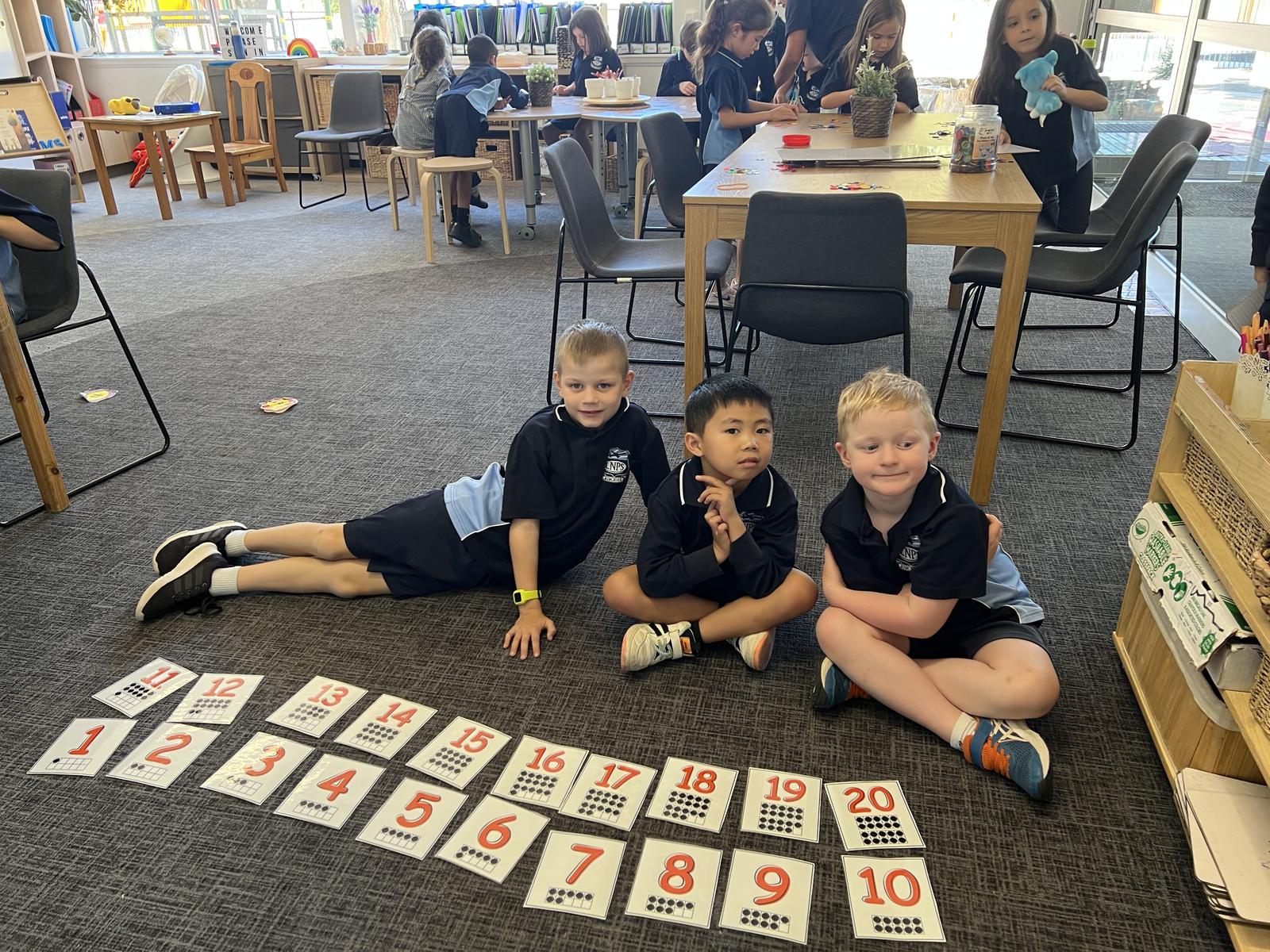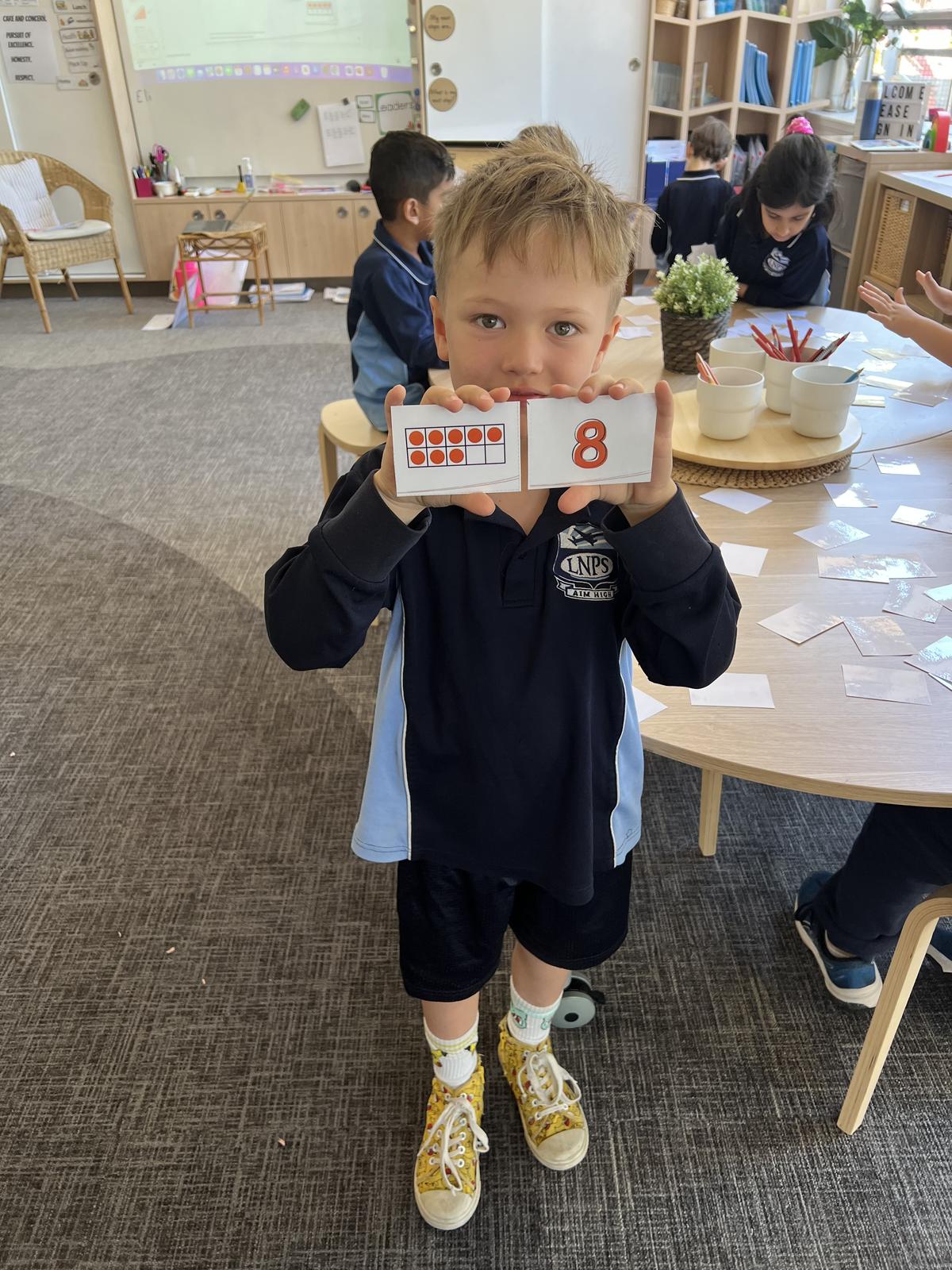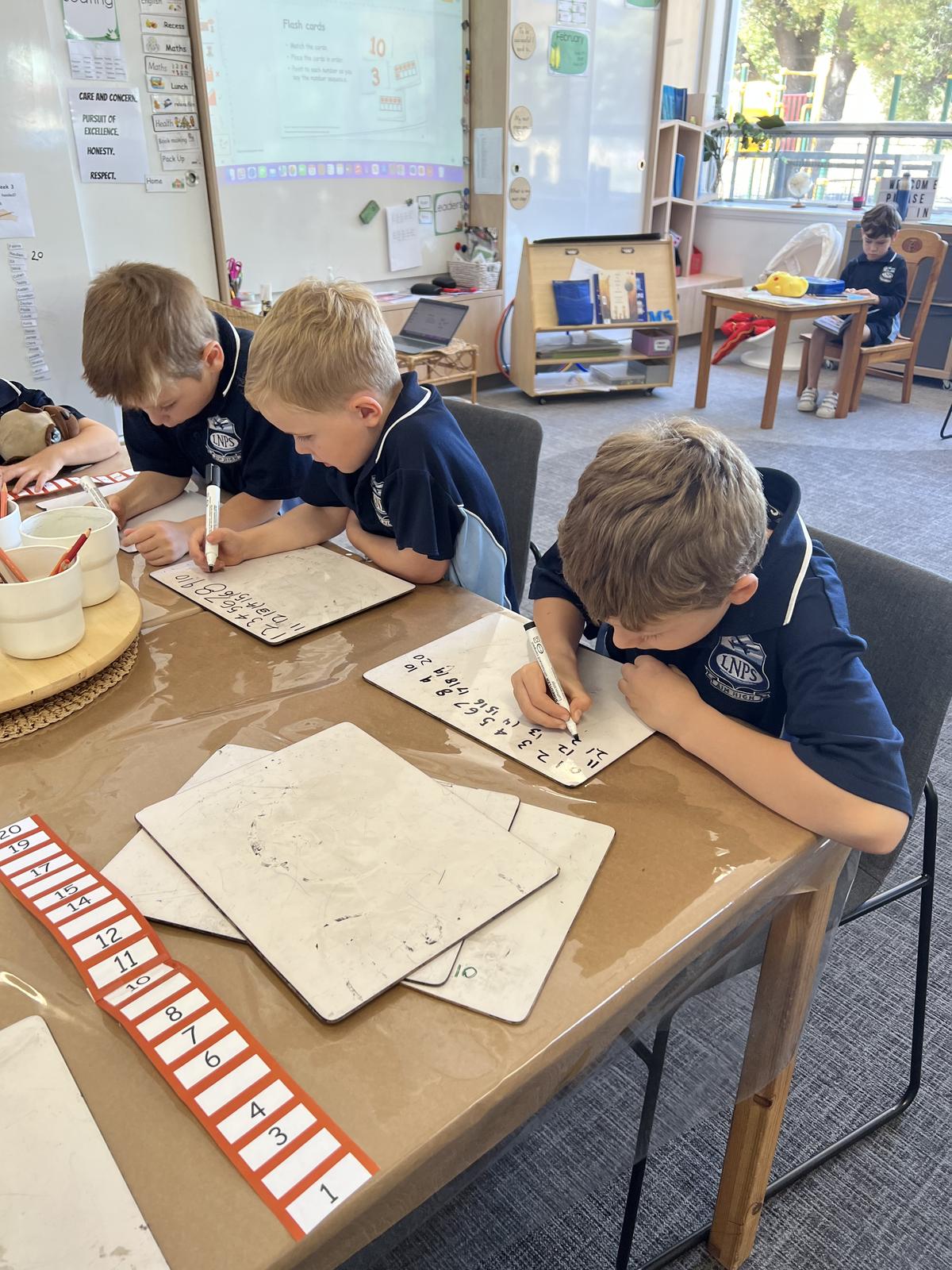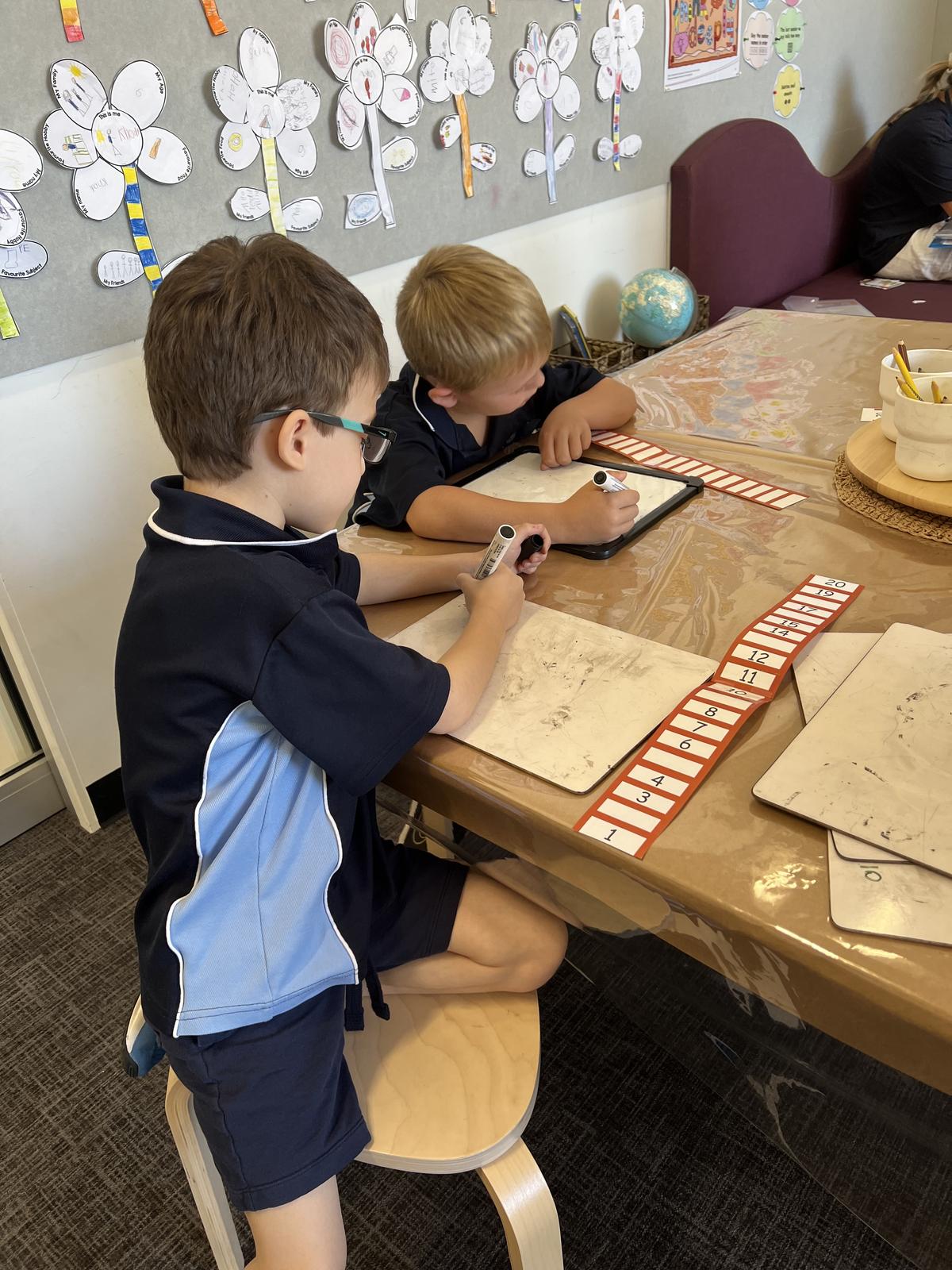Mathematics

Term 1
Being a Mathematician
Learning intentions:
To know that:
• Everyone can be a mathematician.
• Mathematicians prove their thinking.
• Mathematicians learn from their mistakes.
• Mathematicians stick at it.
• Mathematicians think deeply.
Revisiting Counting
Learning Intentions:
• I know why we count.
• I can count to 20.
• I can count every object only once.
• I can subitise small collections.
• I know the arrangement does not change the amount.
• I can say the numbers in the correct order to 20.
• I know the last number I say is how many.
• I can say the numbers in backwards order from 10.
• I can count from any starting point.
• I can write the numerals 0 to 9 correctly.
• I can identify the whole.
• I can identify the parts.
• I can partition the numbers to 10 into 2 groups.
• I can find the whole from 2 parts.
• I can find a missing part.
Counting and Quantity
Learning Intentions:
• I can use my number knowledge to play games.
• I can say the number sequence forwards and backwards to 120.
• I can count from any starting point.
• I can partition and say the part-part-whole of numbers to 20.
• I can count forwards by 2 to count a collection.
• I can count forwards by 10 to count a collection.
• I can count forwards by 5 to count a collection.
• I can estimate how many are in a collection.
Measurement - Length
Learning Intentions:
• I can describe the measurable attributes of an object.
• I can measure the length of an object with a uniform, repeated unit.
• I can compare and order objects based on their length.
• I can describe the strategies I used to order and compare the length of objects.
• I can choose appropriate units to measure the length of an object.
Measurement - Calendars and Dates
Learning Intentions:
• I understand that calendars are a way to organise days.
• I use calendars to understand the number of days between events.
Term 2 Units
Algebra
Learning Intentions:
• I can sort objects by colour, size, shape and how many.
• I can identify similarities and differences.
• I can identify a pattern and its parts.
• I can copy and continue a pattern.
• I can fix a pattern with mistakes.
• I can identify missing elements in a pattern.
• I can describe a pattern.
• I can count the elements in a pattern.
• I can count patterns by skip counting.
• I can predict what comes next in a pattern.
• I can use a table to record a pattern.
• I can create and label a repeated pattern.
• I can recognise the amount a pattern increases or decreases by.
Number and Place Value
Learning intentions:
• I can order and compare large collections and numbers.
• I can count a large collection efficiently using 1s, 10s and 100s.
• I know that 10 ones are equal to 1 ten, 10 tens are equal to 1 hundred and 10 hundreds are equal to 1 thousand.
• I can count forwards and backwards using 1s, 10s and 100s.
• I know the names, numerals, and digits of the teen numbers.
• I know that teen numbers are ten and some more.
• I can count collections using tens and ones.
• I can partition 2-digit numbers into tens and ones.
• I can explain patterns in a 120 chart.
• I can use place value knowledge to play place value games.
• I can make and represent quantities.
• I can make a collection of 1000.
• I can identify the value of the digits in a number.
• I can read and write 3-digit numbers in words and numerals.
• I can rename numbers in different ways using place value parts.
• I can recognise the role of the zero digit in place value.
• I can estimate how many are in a collection.
• I can use my knowledge of place value to be a problem solver.
Addition and Subtraction
Learning Intentions:
• I can show what I know about addition and subtraction.
• I can use the ‘add or subtract 0’ strategy.
• I can use the ‘count on from the largest number’ strategy.
• I can use the ‘count back by 1, 2 or 3’ strategy.
• I can use the ‘make to 10’ strategy for addition and subtraction.
• I can use the ‘doubles’ strategy for larger numbers and subtraction.
• I can use the ‘near doubles’ strategy.
• I can add on to and subtract from a friendly number.
• I can partition using place value to ‘split’ and add and subtract 2-digit numbers.


